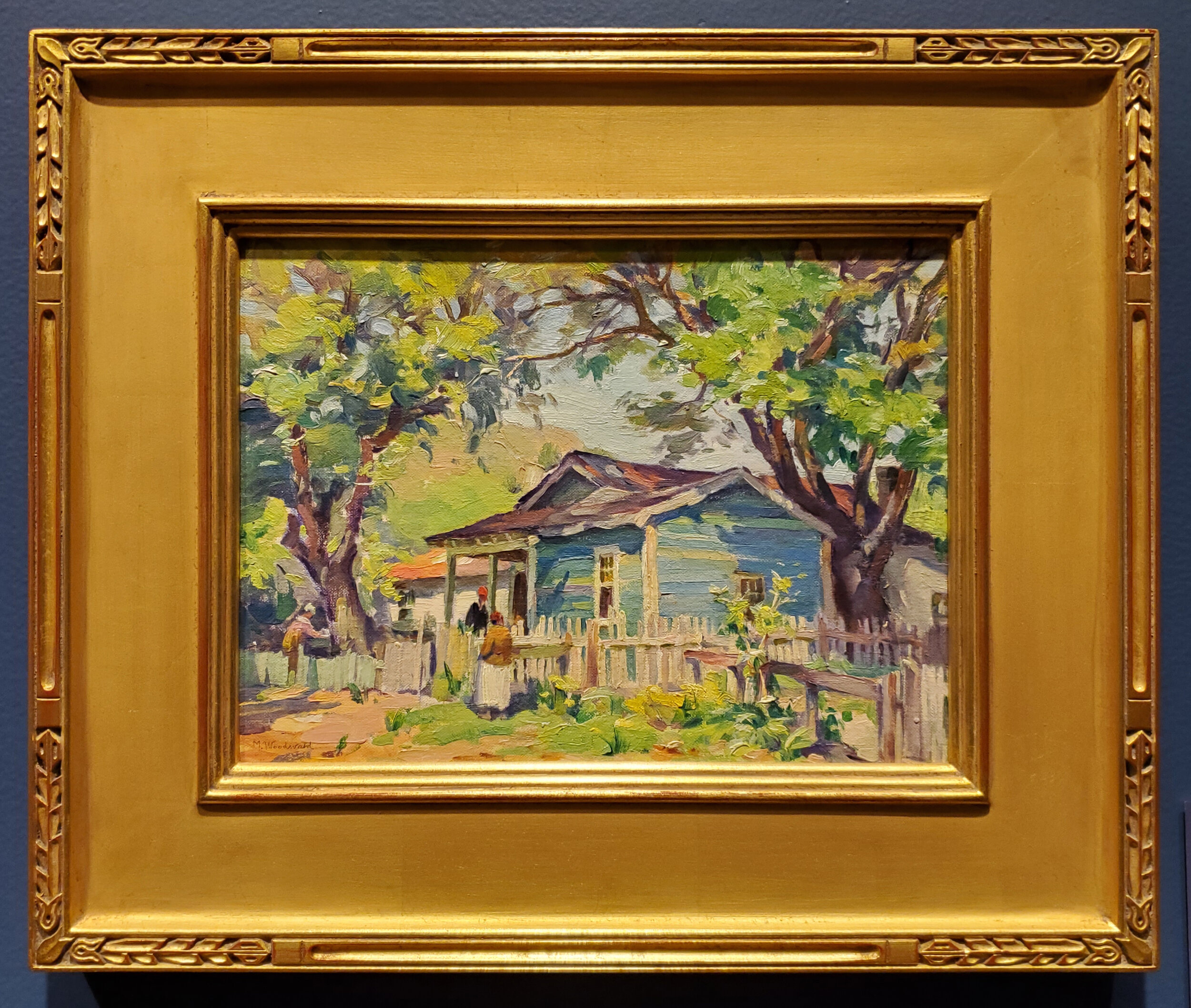Docent’s Corner | The New Woman – A Convergence of Technology, Feminism, and Impressionism
She was born into a world dominated by men. All around her, strong, capable women continued in the time-sanctioned roles of wives, mothers, and caregivers, under the powerful influences associated with societal pressure and approval. In general, without access to higher education, money, or legal rights except through male relatives, a woman had few other career choices during most of the 19th Century.
Fortunately, the bright energetic mix of technology, invention, and industrialization, and the prospect of increased wealth in the late 1800’s, brought about positive, forward-thinking attitudes whose benefits eventually reached the female population. Among the first of those to embrace the radical goal of autonomy were women artists of the Impressionist era. Anyone successfully engaged in this pursuit came to be known as a New Woman, and the concept of feminism took on a modern aspect. Being one of independent spirit and means, the New Woman exercised her own control over her own life. The term connoted a modern mind; educated, accomplished, and influential.
For a woman aspiring to a career in the fine arts, however, there were still formidable obstacles to her success. Many art academies either did not admit women, or they segregated them and elevated their fees. Professionally, gender bias minimized women’s artwork, relegating it to inferior status and frequent rejection. In addition, Impressionism, the preferred style among forward-minded artists, was not yet well accepted in the US. Gaining recognition for one’s Impressionist work was a formidable task, even for well-established male artists.
Is it any wonder then, that the women artists who became successful during this era, also became highly influential in modernizing public attitudes about all women? In their work and in their personal lives, they embodied the essence of the New Woman. Importantly, early women artists also learned from their experiences. They formed support groups, shared studios, taught, exhibited, and worked together to promote each other’s work. They established their own art associations, exhibiting and marketing their art through professional enterprise.
Image credit: Mable May Woodward (American, b. 1877 – 1945). Native Home in Charleston, South Carolina, 1932. Alexander Collection, 2014.01.1.
The Alexander Collection features the work of five impressive women artists. I urge you to re-see their Impressionist artwork through the important historic lens of the emerging New Woman:
Lilla Cabot Perry, who used her money and position to promote and financially assist fellow artists, was an acclaimed artist in her own right. Well-traveled and mentored by Monet, she advanced the acceptance of Impressionism in the US by hosting receptions and exhibits for him.
Ellen Day Hale traveled to Paris and paid more than her male counterparts to study at the renowned Academie Julian. Her well-known lineage of strong feminine role models led her to become a powerful influence in the public acceptance of women painters. Widely known in important venues and invited to exhibit at the Chicago World’s Fair in 1893, she challenged the standards of her day by cutting her hair in bangs, and by assuming a pose of unapologetic and direct gaze at the viewer in her own self-portrait, a position deemed to be unnecessarily assertive and inappropriate for an artist. She was famously unmoved by the criticism. Highly trained, successful, and never married, she embodied the very essence of the New Woman.
Mary Bradish Titcomb, who had no formal art instruction until the age of 44 after a 27-year career as a school teacher, traveled to France where she became enamored with the Impressionist style. Returning to the US, she studied art in Boston with two members of The Ten, the highly influential group of male artists devoted to the Impressionist style and its acceptance in the US. She eventually became established as one of the most important women artists in the US at the turn of the century. She became a member of The Group, an early and significant organization of successful women artists in Boston, where she shared workspace at the famous Fenway Studios. A prolific painter, she exhibited in up to 15 venues a year, throughout her life.
Mabel May Woodward, a graduate of the Rhode Island School of Design and faculty member for 20 years, introduced innovative coursework and encouraged female students. She traveled independently along the East Coast for many summers, painting portraits and beach scenes. She was one of the best-known painters in Rhode Island in the 1920’s and 30’s.
Jane Peterson, who borrowed $300 to attend Pratt Institute, established a renowned painting career, and enjoyed a bon vivant lifestyle in Paris for several years. Known as a famously independent and autonomous woman, she was well-traveled and well-connected, living, teaching, and painting in several different countries and cultures during her lifetime.
Finally not to be missed are the “Painting Ladies” featured in the Janet H. Wilson Collection, who brought their own versions of the “New Woman” to Blowing Rock as students of Eliot Daingerfield in the 1890’s and early 20th Century. Enrolled at the Philadelphia School of Design for Women where Daingerfield taught for twenty years, they followed him in the summer months to the High Country of North Carolina, traveling and living independently. Most of the Painting Ladies went on to enjoy an autonomous lifestyle supported by earned income from their art endeavors. They all became advocates for the arts community, establishing studios in such diverse locations as New York, Maine and Arizona. Some of them were founding members of The Philadelphia Ten, the first professional women’s artist organization in the US, promoting and exhibiting women’s artwork for 27 years. Many of them also knew or worked with the well-known women Impressionists above.
This Docent’s Corner is brought to you by Madge Megliola

